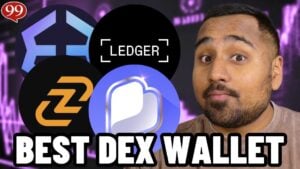
In recent months, Solana has recorded revenues higher than Ethereum and its Layer 2 solutions, despite the overall market decline.
This result raises questions about the sustainability of the economic model of the two blockchains and their long-term prospects. We analyze the data and the dynamics that have led to this scenario.
Solana vs Ethereum: a challenge increasingly heated for ETH Layer 2
Ethereum has been the undisputed leader in the blockchain sector for smart contracts for years, but Solana is gaining ground thanks to its high scalability and reduced costs.
While Ethereum relies on Layer 2 like Arbitrum and Optimism to improve performance, Solana stands out for its monolithic structure, which allows for fast transactions and lower fees.
According to recent data, Solana has generated daily revenues exceeding those of Ethereum and its scalability solutions, a significant result considering the historical dominance of the Ethereum ecosystem. But what has driven this growth?
One of the most significant aspects is the increase in transaction fees on Solana, which have reached record levels, driving the network’s revenues.
Although Solana is known for its low fees, the increase in activity has led to a higher payment of fees by users.
Furthermore, the increasing use of DeFi and NFT applications has contributed to fueling traffic on the blockchain. The transaction volume and the demand for block space have led to an increase in overall revenue.
Ethereum continues to dominate in terms of value locked in DeFi protocols and institutional adoption, but its high fees still represent an obstacle for many users.
Layer 2 solutions, such as Arbitrum and Optimism, have reduced costs, but their usage is fragmented compared to Solana’s monolithic approach.
Although Ethereum generates consistent revenue, the competition with Solana highlights some weaknesses in its model.
Relying on Layer 2 can create complexity for users and reduce the overall user experience, while Solana offers a more integrated and accessible system.
Ethereum and Solana: which blockchain will dominate in the future?
A crucial aspect to consider is the sustainability of Solana’s growth. The increase in transaction fees could be a temporary phenomenon, linked to the increase in demand during specific periods.
If the network fails to maintain a balance between costs and accessibility, it could lose its competitive advantage.
Furthermore, Solana has faced stability issues in the past, with network outages that have raised doubts about its reliability. The ability to handle increasing traffic without compromising functionality will be crucial for its long-term success.
The competition between Ethereum and Solana is destined to continue, with both blockchains seeking to improve their own models.
Ethereum focuses on the evolution of its infrastructure and the adoption of Layer 2, while Solana leverages its efficiency to attract users and developers.
If Solana manages to maintain the current revenue levels and address the technical challenges, it could consolidate its position as a credible alternative to Ethereum.
However, Ethereum has on its side a consolidated ecosystem and a solid community, factors that could guarantee it an advantage in the long term.

 8 months ago
46
8 months ago
46




 English (US) ·
English (US) ·